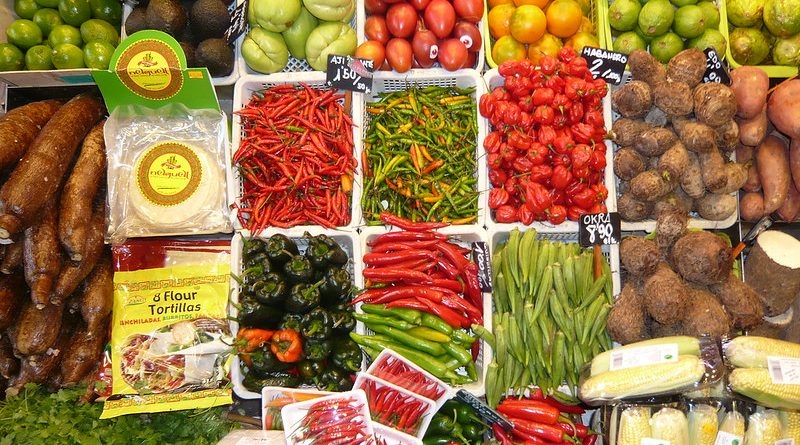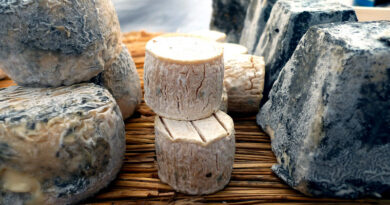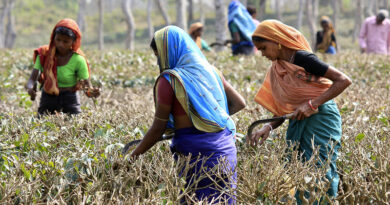The Food of Spain
North Spain
Every region in northern Spain has excellent local food. Often there are clear differences between the cuisines of the regions. Barcelona features world class restaurants and famous chefs, as well as a time-honored Catalan cuisine. At the city’s famous market La Boqueria visitors can stroll the marketplace admiring fresh produce and interesting regional items alongside some of Barcelona’s top chefs.
The Basque region is well known across Spain for its pintxos, which are similar to tapas. San Sebastian and Bilbao are some of the best places to sample pintxos and to experience the tradition of a night out going from bar to bar tasting just a few of the endless variations of these delicious small plates. There are also many Michelin star restaurants in the Basque region including at least eight in San Sebastian alone.
The seafood of Galicia, Spain’s northwest region, is some of the best in Spain and is often freshly caught. A celebrated Galician dish is Polbo á Feira (boiled octopus with paprika and olive oil). Other well-loved specialties from the sea include goose barnacles, langoustines, mussels, and various types of fish.
Caldeirada (Galician fish stew shared also by the Portuguese), and empanadas (savory pastries) stuffed with meat, tuna, sardines, vegetables or other ingredients are also popular. In the town of Santiago de Compostela, a sweet almond cake called Torta de Santiago represents a long time tradition and is sold in many pastry shops.
The Asturias region is well known for its specialty cheeses such as Cabrales and Afuega’l pitu. Over one hundred different types of cheeses are produced in the region. A dry cider is also produced in Asturias, called sidra. It is made from Asturian apples and is sometimes served in traditional way by a specialist sidra server (escanciador).
The cuisine of Navarra is known for Roncal cheese, locally grown asparagus, piminetos del piquillo (red peppers), and specialties made with duck such as Pato con Melecotones (duck with peaches). The salmon and trout of this region are also excellent.
La Rioja is best known for its wines which are mostly blends incorporating the predominant Tempranillo variety with other locally grown grapes such as Garnacha. There are many wineries and vineyards in the area. La Rioja also has an excellent reputation for its cuisine.
Watch: Globe Guides – Wine Trails: France, Italy & Iberia
Southern Spain
The food of southern Spain is quite varied, with Mediterranean staples such as olives, grapes for wine, seafood, and various seasonal fruits and vegetables making regular appearances in dishes and tapas across the region. Each region or town has its own specialties – usually many of them. Fish and seafood are prevalent in coastal areas, and inland meats such as goat and game are popular.
The cuisine is thoroughly rich and diverse, with a plethora of unique and interesting recipes for the visitor to encounter at each stop.
Málaga, with its long coastline, is known for a dish of fried fish and shellfish called fritura Malagueña. The food of Granada has notable Arabic influences, evident by its use of plenty of spices, and the appearance of some dishes that combine sweet with savory. The cuisine of Cádiz features plenty of seafood, as well as game, soups, and stews.
Gazpacho, chilled soup with bread, garlic, and vegetables, most often with a base of tomatoes, is a refreshing specialty throughout Andalucia. Córdoba, located in central southern Spain, specializes in a variant of gazpacho called salmorejo, which is thicker than traditional gazpacho, and can be topped with boiled eggs and ham. The Córdoba region also features many game dishes and flavorful stews.
In Seville, where tapas rules, visitors should try the popular huevos a la flamenco – a satisfying dish with baked eggs, peppers, and chorizo. Croquetas de Bacalao (Salt cod croquettes) are another firm favourite to be enjoyed with a drink. Don’t miss the ubiquitous jamón Ibérico de Bellota you see hanging around either.
The area around Jaén is famous for its olive oil, which is a certified D.O. (Denominación de Origen) product, verifying its superior quality. The region also has many other noteworthy dishes, including torrijas – bread soaked in wine or milk, dipped in egg, fried in olive oil and topped with cinnamon and sugar or a thick syrup.
The wines of southern Spain are many and of good reputation. Jerez is the birthplace of sherry, and Málaga is known for its sweet fortified wine, made from the grapes Pedro Ximénez and Moscatel.
Eating out
Barcelona and Catalonia
From small, affordable neighbourhood joints to world renowned shrines to the art of dining, Barcelona’s restaurant scene is rich and varied.
There are four basic elements that form the basis of many Catalan dishes: sofregit, tomato and onion sautéed together in olive oil until soft. Samfaina, a rather ratatouille like mixture of aubergine, garlic, onion, red and green peppers and tomatoes which usually accompanies grilled fish and meats.
The fabulous picada, the ingredients of which depend upon which dish it will be used to enrich and thicken, but usually contains nuts, garlic, parsley, bread, and ham, all mashed up with mortar and pestle. Last is allioli, a garlic mayonnaise served with meat and seafood, best made solely with raw, crushed garlic and olive oil.
Catalans like their country classics – pork, sausages, lamb and rabbit.
Seville and Granada
Going out for tapas is the evening tradition in Seville, with many bars offering small plates of food along with drinks. Some people make a meal of this, going from bar to bar eating and drinking for several hours. For others, dinner is usually eaten late. Tapas variations are endless, but can include seafood dishes, grilled or stewed meats, regional cheeses, Iberico ham, and gazpacho (an Andalusian specialty).
Serranito, a hot sandwich with grilled meat, peppers, and other ingredients, is a popular local street food or festival food. For sweets, try pestiños (strips of fried dough, soaked in honey syrup or dusted with sugar) and magdalenas (small sweet cakes). After a long night out (Sevillanos do like to party), a good way to end the night is an early morning snack of churros with rich chocolate (chocolate con churros).
In Granada the tapas scene is elevated by the city-wide custom of offering a free small plate (tapa) with each drink you order (and pay for). Granada is one of the only cities in Spain to carry on this custom. Some popular tapas in Granada include habas con jamon (fava beans with serrano ham), calamares fritos (fried squid), fried potatoes with pepper and onions, paella (rice with mixed seafood or vegetables), queso curado(cured cheese), patatas bravas (fried potatoes with tomatoes and pepper), gambas al pil-pil (shrimp sautéed with olive oil and garlic), and omelets with potatoes. Other tapas include fried vegetables, seafood, potato croquettes, olives, and paninis. Options are truly endless – as are, it seems, the number of tapas bars to choose from.
Besides the usual glass of wine, juice, or mineral water, other popular drinks include “tinto de verano” (red wine and lemonade), and local beer such as Cerveza Alhambra from a Granada brewery.
Visitors can enjoy sweet Moroccan tea in one of many teterías (tea houses), especially in the Albayzín area. Some of these cafes also offer delicious pastries, juices, and refreshing smoothies.
Pilot’s Spanish Recipes
Urta con Veduras (Red Band Bream with New World Vegetables)
Olives marinated in Thyme and Garlic
Estufado de Codero y Verduras (Farmhouse Stew with Lamb & Vegetables)




